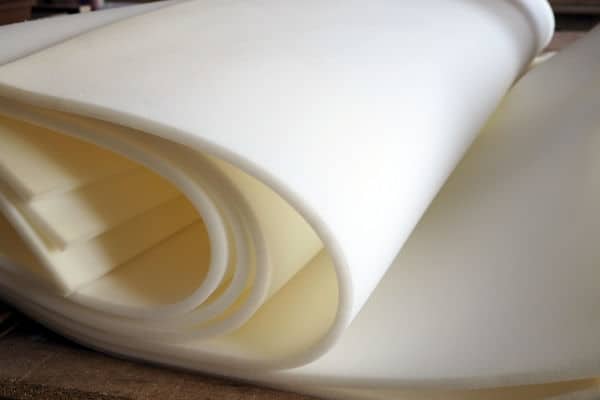A Guide to Foam Types and Applications
Polyurethane Foam
Polyurethane foam is a versatile and commonly used foam material. It is used in the vast majority of interior furniture in the United States and abroad, and can be found in different densities and firmnesses, making it suitable for various applications. This type of foam is often used in upholstery, mattresses, cushions, and insulation due to its excellent comfort and insulation properties.
Memory Foam
Memory foam, also known as viscoelastic foam, and a type of polyurethane foam, is known for its ability to contour to the body’s shape and provide excellent pressure relief. You can accurately call this foam space-age foam, since memory foam was invented by researchers for NASA who were tasked with developing a more comfortable foam for test pilots and astronauts.
This foam material reacts to body heat, allowing it to mold and adapt to the sleeper. Memory foam is commonly used in mattresses, pillows, and medical applications. For memory foam mattresses, we recommend trademarked PostureSense™ memory foam, a house brand of FoamOrder.
Polyethylene Foam
Polyethylene foam is a closed-cell foam with exceptional shock absorption and cushioning properties. This foam material is commonly used in packaging, sports equipment, flotation devices, and automotive applications.
Water rolls off closed-cell foam, which makes it a resilient choice in demanding environments. Because of its high density and firm structure, polyethylene foam has dozens of possible industrial applications. FoamOrder.com offers several types of polyethylene foam including our EVA, Cross-poly foam, and Flotex foam.
Neoprene Foam
Neoprene foam is a flexible and durable foam that exhibits resistance to water, oils, and chemicals. It is often used in wetsuits, sports equipment, gaskets, and sealing applications. Neoprene foam provides excellent insulation and cushioning properties. Neoprene is most commonly known for its use in wetsuits, and comes as a layer of rubber usually coated on one or both sides with a thin layer of nylon material. At FoamOrder.com, we stock a wide variety of colors and neoprene sheet thicknesses, totaling over 100 different combinations to order from.
Latex Foam
Latex foam is made from natural or synthetic latex rubber. It is known for its elasticity, comfort, and breathability. Latex foam is used in mattresses, pillows, and upholstery. Natural latex foam is considered more environmentally friendly compared to synthetic latex foam. For the eco-conscious consumer, or those looking for a more luxurious feel to their cushions, latex is a popular option.
Polypropylene Foam
Polypropylene foam is a lightweight and flexible foam that offers resistance to moisture and chemicals. It finds applications in automotive components, packaging, insulation, and cushioning. Polypropylene foam provides excellent thermal insulation properties.
Closed-Cell Foam
Closed-cell foam consists of sealed cells, making it impermeable to air and water. It offers excellent buoyancy and insulation properties. Closed-cell foam is commonly used in flotation devices, insulation, and water sports equipment.
Types of closed-cell foam, which has closed, compressed cells, range from EVA foam to a rigid polyethylene foam also known as cross-poly foam. This foam resists water absorption for a tighter seal.
Closed-cell foam types include versatile Flotex foam, for which uses range from yoga mats to flotation-friendly boat cushions and life preservers.
Outdoor Foam
Outdoor foam, often described as reticulated foam, is specifically designed to withstand exposure to the elements. Unlike standard foam materials, outdoor foam is engineered to be more durable, water-resistant, and resistant to mold and mildew growth. Because of its open cell structure, water and other liquids will easily pass through the foam, allowing it to dry quickly and easily, and reducing the chance for mold or mildew to develop in the cushion.
You will see outdoor foam commonly used in outdoor furniture cushions, boat seating, and patio cushions. It’s the preferred choice for other applications where foam will be exposed to moisture, sunlight, and varying weather conditions.

